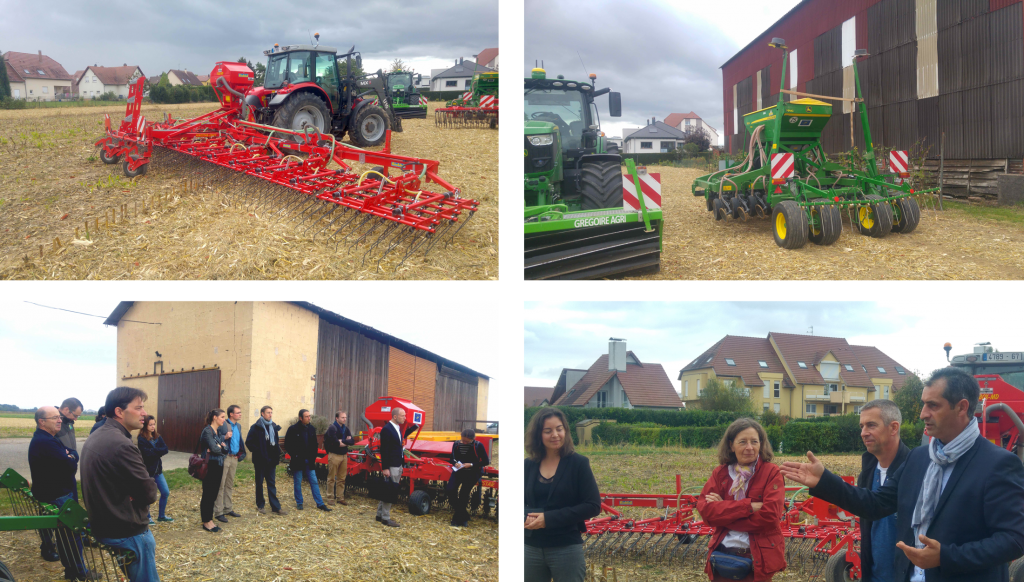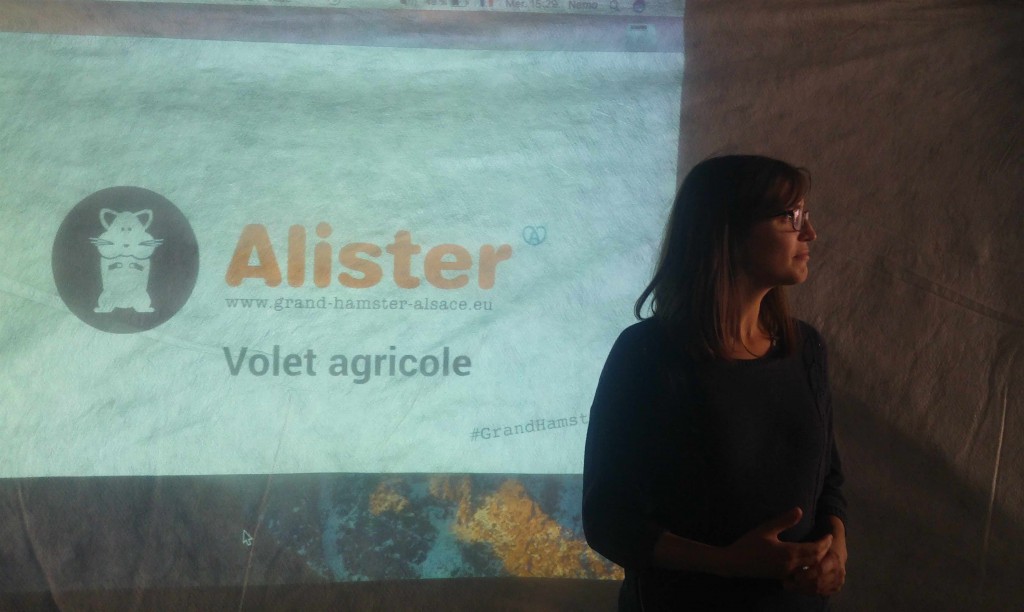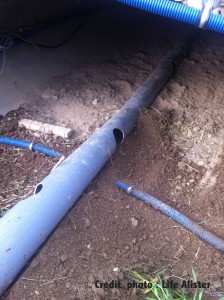The ‘Workshop’ Afternoon of the Results Symposium
13 novembre 2018After a morning of presentations and discussions held at the Grand Est Region assembly hall (Maison de la Région Grand Est) in Strasbourg, the afternoon of the LIFE Alister results symposium continued on the farm run by Jean-Luc Meppiel, a farmer taking part on the programme’s agronomic trials in Oberschaeffolsheim.
CUMA de la Plaine machinery
The Symposium provided the perfect opportunity to take a look at all the farm machinery that the agricultural cooperative CUMA has acquired through LIFE funding. This also led to discussions with farmers and the Alsace Regional Chamber of Agriculture as to the value of this equipment, which is still seen as an innovation in the sector, and the cultivation methods that it can be used for.
The Predator-Proof Tube
The CNRS also explained the workings of its predator-proof tube (Tube Anti-Prédation, or TAP), which it unveiled at the Round Table 2 discussion earlier that morning. Designed to facilitate and secure the wildlife crossings used by the European hamster and other small mammals, this device was developed by the CNRS as part of the LIFE Alister project. The device was tested both in the laboratory and on site with European hamsters in semi-captivity and caged predators to allow researchers to measure how the hamsters responded to the shelter provided by the TAP. Images and videos of these trials were presented at the ‘Workshops’.
Presentation of educational materials regarding the programme’s agricultural branch
This summer, the French National Hunting and Wildlife Agency (ONCFS) put together a number of educational videos on the agricultural branch of the LIFE Alister programme which is managed in collaboration with the French National Scientific Research Centre (CNRS) and the Alsace Regional Chamber of Agriculture. These videos were premièred at the conference and are available to watch on the project’s YouTube channel. English subtitles were provided so that Dutch farmers could also benefit from the information presented in the videos.
The Predator-Proof Tube
The CNRS also explained the workings of its predator-proof tube (Tube Anti-Prédation, or TAP), which it unveiled at the Round Table 2 discussion earlier that morning. Designed to facilitate and secure the wildlife crossings used by the European hamster and other small mammals, this device was developed by the CNRS as part of the LIFE Alister project. The device was tested both in the laboratory and on site with European hamsters in semi-captivity and caged predators to allow researchers to measure how the hamsters responded to the shelter provided by the TAP. Images and videos of these trials were presented at the ‘Workshops’.
The Symposium ends with a pat on the back
Bernard Gerber, deputy chairman of the Grand Est Region Environment Commission, ended the day by congratulating all LIFE Alister partners. As a project partner and coordinator, the Grand Est Region handles relations with partners and with the European Commission, which is provided with monitoring information on the project. This Symposium was also an opportunity for the Commission to send the agency’s expert in project monitoring and verification of compliance for a visit to the LIFE Alister project.








![Congratulations Nathalie Arnold, a Chevalier de l’ordre du Mérite Agricole [A Knight of Agricultural Merit].](https://www.grand-hamster-alsace.eu/wp-content/uploads/2016/12/medaille-120x100.png)
